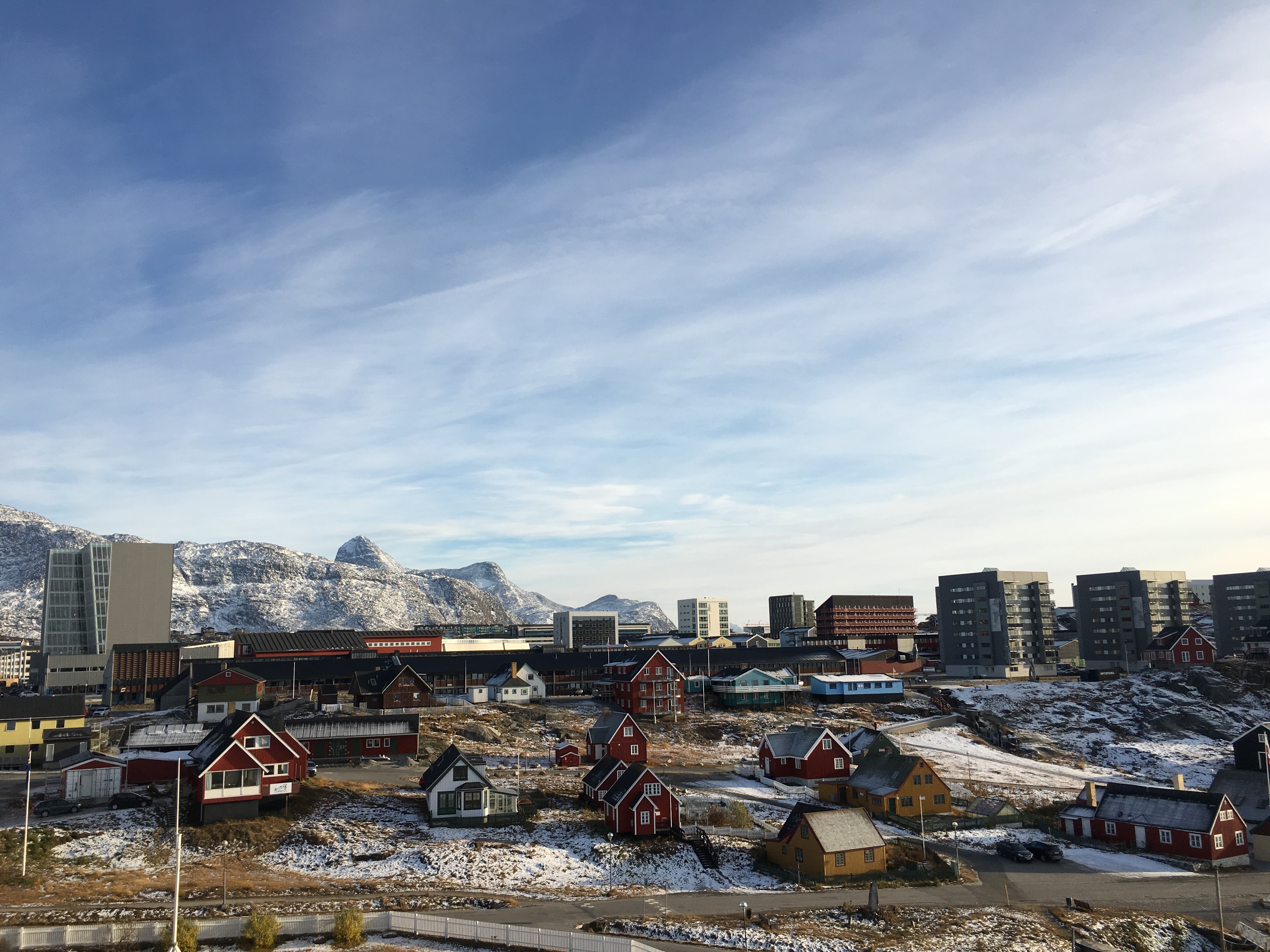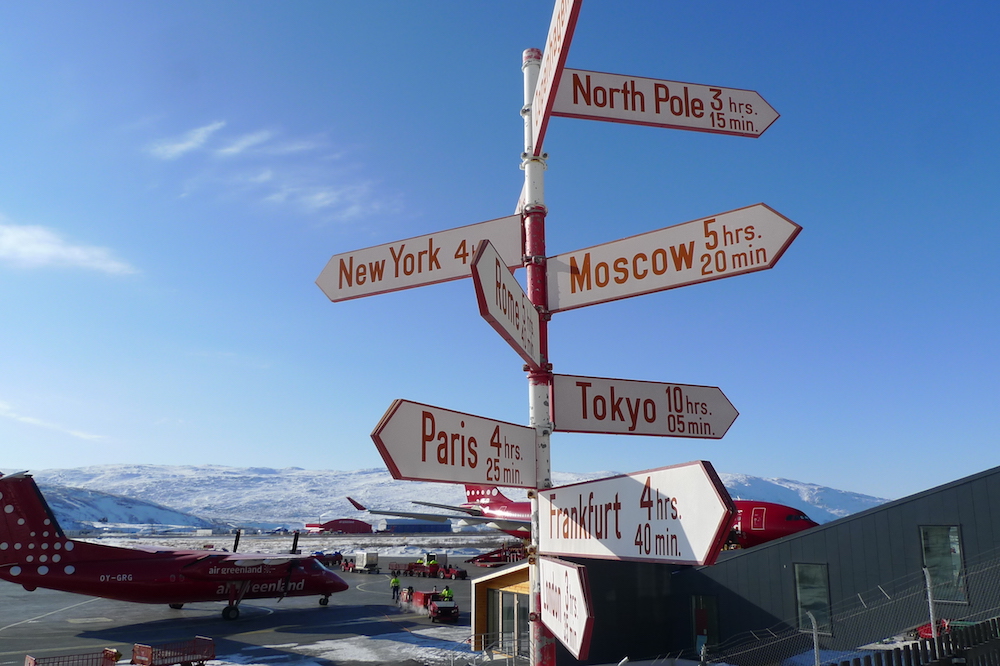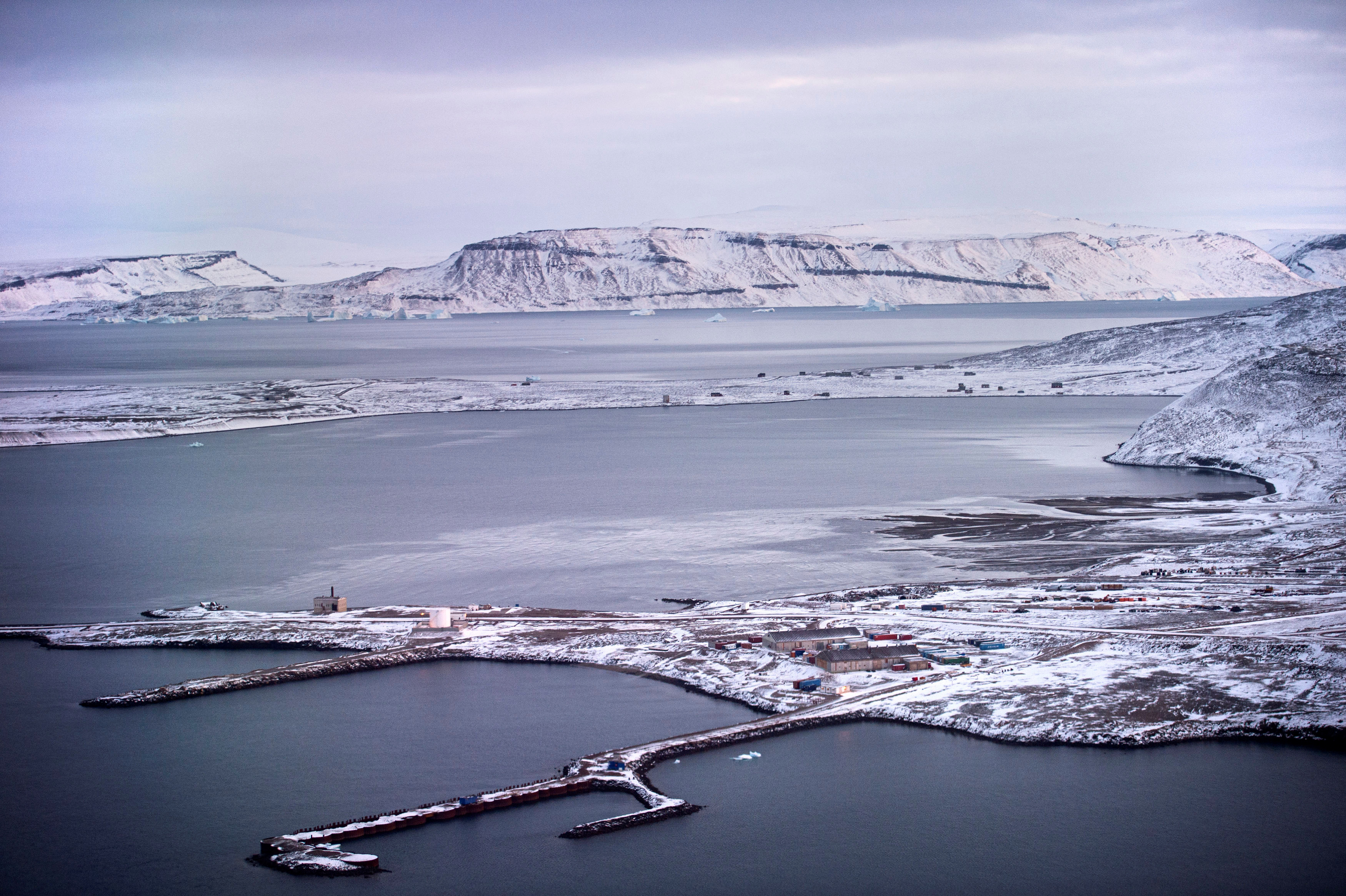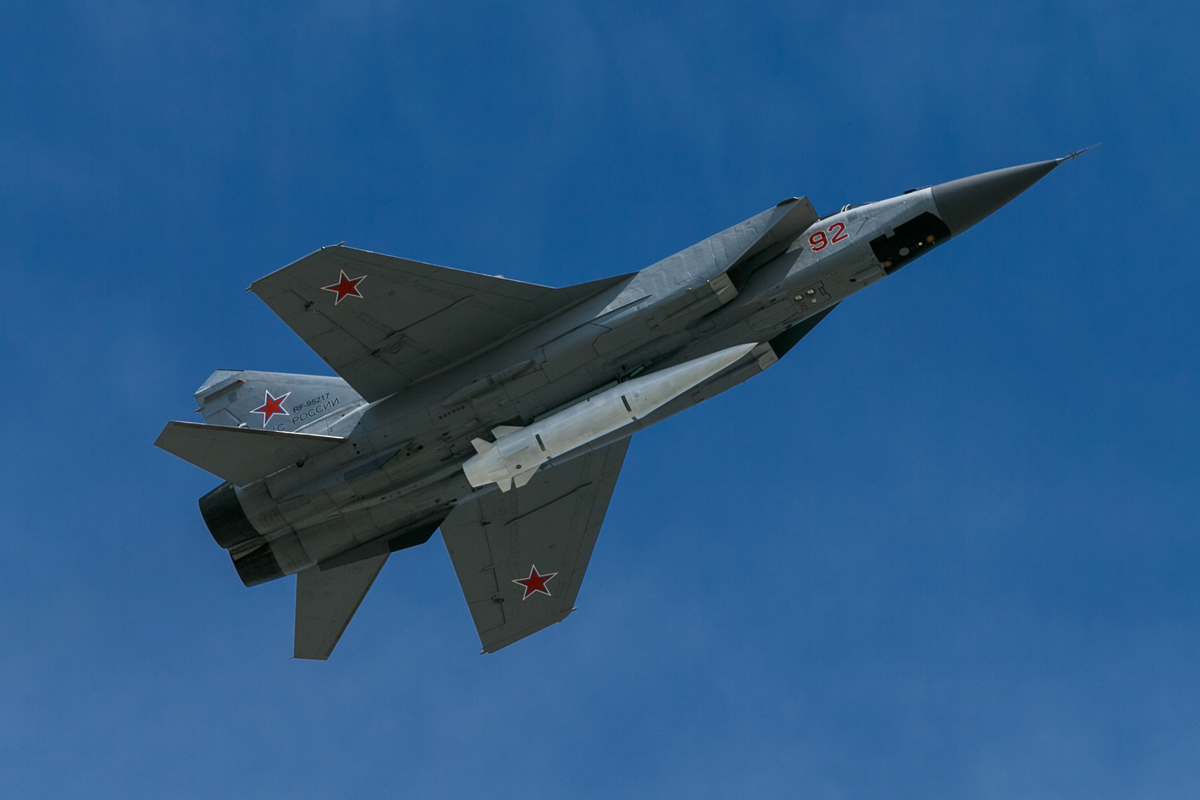Russia’s hypersonic missiles could be why Donald Trump wants to buy Greenland
Growing U.S. interest in Greenland — or what form it might eventually take — haven't been clear. The emergence of a new class of Russian missiles might yield some insight.

It has been a little more than three months since U.S. president Donald Trump confirmed on live TV that a purchase of Greenland, its entire population included, had been discussed at the highest level within the U.S. administration and that the president regarded it as an interesting idea.
It would, the president explained, be strategically convenient for the U.S. and it would potentially free a good ally — namely Denmark, which still holds sovereignty over semi-autonomous Greenland — from a severe and somewhat unnecessary economic burden.
Ever since, we have waited in vain to learn how the U.S. intends to follow up on this presidential suggestion and the underlying strategic concerns. The idea of an actual real estate deal, as the president defined it, was of course soon buried, being in essence “absurd,” as Danish prime minister Mette Frederiksen quickly pointed out. But it left a clear imprint of the rapidly intensifying U.S. interest in Greenland, and how it is based on severe and deep-rooted U.S. concerns over Russia and China as advancing adversaries in a new and changing Arctic. Greenland has become again a very important geographic domain for the U.S.
Which is why we here in Denmark, where I am based, and the people of Greenland have been eagerly waiting to learn how the impossible idea of a purchase will be translated into more precise real-world suggestions from the U.S. on how it might increase its military presence in Greenland.

On Friday, the Danish Defence Intelligence Agency (DDIA) placed the Arctic and the growing rivalry between the U.S.A., Russia and China in the Arctic at the very top of its annual list of security risks relevant to Denmark and Greenland.
[China is mixing military and science in its Arctic push, says a new Danish intelligence report]
While Denmark welcomes in general the increased U.S. interest in Greenland, it also poses, in the eyes of the intelligence service, a dilemma, because an increased U.S. military presence in Greenland may antagonize Russia and thus lead to unwelcome heightened Arctic tension. The DDIA phrases this dilemma as follows (my translation):
“The increase in U.S. attention to the Arctic is causing concern in Russia. Russia likely sees it as an attempt to contain Russia also in the Arctic and therefore finds that it threatens Russia’s strategic interest in the region (…) It is likely that it will become increasingly challenging to balance the regard for allies and the defense of the Kingdom of Denmark’s strategic interests against the desire to pursue the ambition of a low level of tension.”
The intelligence service does not, however, provide any details on what exactly may be on the horizon in Greenland in terms of increased U.S. military activity.
Will Pentagon want to establish in Greenland more robust air defense systems to defend the large radar at Thule Air Base, which is largely indispensable to U.S. missile defense but practically without air defense? Will the U.S. want to build military installations, including airstrips and barracks, along Greenland’s east coast from where it could manage drones to monitor Russian subs in the straits between Greenland, Iceland and the U.K.? Will the U.S. Air Force begin re-using the fine 3,500-meter landing strip at Greenland’s international airport at Kangerlussuaq, built by the U.S. in the 1940s as a pitstop for U.S. fighter planes en route to Europe? Will the U.S. Navy choose the harbor in the town of Sisimiut on Greenland’s west coast as suitable for expansion into one of the Arctic deep water ports, which Congress has asked the armed forces to start looking at ASAP?

After three months, we still do not have any answers, despite a star-spangled array of U.S. visits to Nuuk and Copenhagen since president Trump’s statements. The U.S. ambassador to Copenhagen, Carla Sands, has made more visits to Nuuk than any of her predecessors, accompanied in turn by experts on Greenland’s minerals, military brass and State Department officials, including on one occasion Thomas Ulrich Brechbuhl, advisor on strategy to Secretary of State Michael Pompeo. The U.S. is reopening its consulate in Nuuk after 65 years and the already close cooperation between the U.S. defense forces and Denmark’s Arctic Command in Nuuk is being reconfirmed.
And yet, not a word on how exactly the U.S. may want to increase its military presence in Greenland. Instead, we are offered vague suggestions as the one that Brechbuhl offered Berlingske, a main daily in Copenhagen, when asked to describe the U.S. mission in Greenland (my translation from Danish):
“On the security and defense side of things and with the resources and experience we have in the North, this is an area in which I think the U.S. will take the primary lead. I think that these are some of the areas that the U.S. are well known for — entrepreneurship and innovation and the creation of an economy which will benefit the people of Greenland. Here I also think that we have certain experiences we can bring to our cooperation. We have some fantastic schools and business models that works well also in places where things may look less bright in these fields.”
Governments in the dark
Recently at an Arctic security conference in Copenhagen I had an opportunity to ask Denmark’s minister of defense, Trine Bramsen, what our government knows about U.S. plans in Greenland. She answered at length, kindly spelling out her view that the U.S. officials visiting Nuuk were most probably constructively arming themselves with valuable updated impressions of modern life in the Arctic. She did not, however, reveal any knowledge of any concrete U.S. plans in Greenland.
Perhaps she was only being prudently discreet. But based also on other signals, including signals from our foreign minister Jeppe Kofod and his Greenlandic colleague Ane Lone Bagger, who visited U.S. Secretary of State Pompeo in Washington on Nov. 13, it now seems more likely that Trine Bramsen was indeed sharing what she knows of any concrete, U.S. military plans in Greenland, which is relatively close to nothing.
[Greenland is high on the agenda as Denmark’s new foreign minister makes his first DC visit]
The core of the matter, I think, is that the U.S. strategists do not yet themselves know what the proper way to move forward in Greenland is. Russia’s rebuilding of its military might in the Arctic — including its new hypersonic missile systems — combined with the China’s economic and diplomatic inroads in the Arctic and the impact of climate change on all this will keep U.S. strategists occupied for some time; another complicating factor is that the whole idea of looking at the Arctic as a prime arena of great power competition is still relatively new to many in the U.S. The concept was spelled out in earnest, as many readers of ArcticToday will remember, only in May this year by Secretary of State Mike Pompeo in his famous address in Rovaniemi, Finland, just prior to a meeting of the Arctic Council. I was there and remember the astonishment that followed.

In Greenland, what we are witnessing is most probably how the many layers of U.S. security, including the military forces, the State Department, the Department of Defense, Pentagon, the National Security Council, the White House, the intelligence agencies are all trying to find their feet, ascertain what can and cannot be done on the ground in Greenland that would make sense.
Also, they need to coordinate all this between themselves before they make any decisions. They have asked the diplomats to sweeten and put on alert relations with Denmark and Greenland, basically paving the way for an increased U.S. presence in the Arctic through Greenland, while they figure out how exactly this presence should be designed, deployed and activated.
Russian missiles at the core?
Meanwhile, in Copenhagen, rear admiral (retired) Torben Ørting Jørgensen has established his own analysis of what may be at the core of the rekindled U.S. interest in Greenland; an analysis he presented as keynote speaker at the Copenhagen conference on Arctic already mentioned. He explained how the U.S. efforts are most likely inspired by nervousness over a series of new Russian weapons, the so-called hypersonic missiles, which are capable of carrying conventional as well as nuclear bombs.
Such missiles are already employed on Russian warplanes and naval vessels. These hypersonic missiles fly several times faster than their older relations, conventional ballistic missiles, making them likely to penetrate current U.S. missile defenses. Also, in contrast to the older missiles they are capable of shifting direction as they go, making it exceedingly difficult to ascertain what their targets are.
[Russia has tested a hypersonic missile in the Arctic, TASS reports]
I called on the rear admiral, who is known in Danish defense circles for knowledgeable observations on the Arctic, after the conference:
“Russia already has these weapon systems. President Putin has boasted how they are already in production. This had come as a very unpleasant surprise to the U.S. defense, because it has happened far faster than expected,” he told me.
His reading of current U.S. defense budgets shows how only very limited funds have been set aside for traditional planes and vessels suited for future service in the Arctic. This makes it less likely, he finds, that the U.S. is looking to expand its more traditional military presence in Greenland. On the other hand, substantial budgetary allotments have been made to advance technologies relevant for U.S. missile defenses against Russia’s and other hypersonic missiles and for the development of the U.S.’s own missiles with hypersonic qualities.

In June this year New York Times noted how the Trump administration’s suggestions for the upcoming budget for defense allocated no less than $2.6 billion for hypersonic technologies, which is why — in Torben Ørting Jørgensen’s analysis — Greenland now enjoys such attention: Since the very idea of missile defense currently is to locate and shoot down any enemy missile as soon as possible after they take flight, any current missile defense aimed at Russian hypersonic missiles must be established as close to Russia as possible. This means that new missile defenses must be based in either Alaska if the aim is to defend the western parts of the U.S. or in Greenland if the aim is to defend the eastern parts of the U.S. This might likely mean the northeastern part of Greenland, the island’s most distant, uninhabited and difficult terrain.
Ørting Jørgesen made me re-read the U.S. Defense Department’s Arctic Strategy from June this year, which also points towards the threat from hypersonic missiles; a threat also key to several recent reports from U.S. media analysts and think tanks, including Rand Corporation, which was already warning against a new and entirely unchecked global hypersonic arms race by 2018:
“Hypersonic missiles — specifically hypersonic glide vehicles and hypersonic cruise missiles — are a new class of threat because they are capable both of maneuvering and of flying faster than 5,000 kilometers per hour. These features enable such missiles to penetrate most missile defenses and to further compress the timelines for a response by a nation under attack,” the analysis read.
The New York Times reported in June how the U.S. Congress has passed legislation to ensure that operational U.S. hypersonic missiles are in place by 2022, but even so the US is already behind. Hypersonic missiles, including the Zirkhov-missile which flies eight times the speed of sound, and the similarly powerful Kinzhal missile, are already exercised on Russian vessels and on MIG fighter jets — including those based on Russia’s Arctic bases only a relatively short distance from Thule Air Base in Greenland.
Torben Ørting Jørgensen surmises that the U.S. will soon want to establish radar or other sensor technology on new bases in Greenland. Any comprehensive defense against the hypersonic missiles will likely, he says, combine sensors based on satellites in space with similar sensors based on ground where military ground staff will be at hand to ensure uninterrupted service and possible some level of air defense. In concrete terms this would entail landings strips, heavy ice- and snow clearing machinery, maintenance crews, barracks, energy supply and multiple other components — all under the relatively extreme conditions, possibly in northeastern Greenland.
No resistance
Politically, the U.S. will probably meet little, if any, resistance to any such plans in Denmark and Greenland. Danish prime minister Mette Frederiksen was quick to label as “absurd” the suggestion that the U.S. could buy Greenland, but make no mistake: She was equally quick to issue consistent assurances that Denmark would welcome “increased strategic cooperation in the Arctic” with the U.S. administration and Greenland’s local leadership was on the same wavelength. Denmark and Greenland are in no position to — and have no desire to — argue with the U.S. on security issues. The U.S., as our prime minister was at pains to explain, is Denmark’s and Greenland’s indispensable NATO partner-in-arms and will remain so for a long as the current world order stands, even if the U.S. sometimes elects extraordinary presidents.
On this premise of assured cooperation between the U.S., Denmark and Greenland, Torben Ørting Jørgensen says his advice to the Danish and Greenlandic governments is that they ready themselves for negotiation with the U.S. in order to ensure that any new U.S. military installation in Greenland will be “dual-use,” or, in other words, designed also for the benefit of Greenland. Landings strips must be made available also for future civilian mining operations or tourist enterprises in Greenland; service contracts for maintenance of bases, barracks and so forth should benefit Greenlandic businesses and so forth.
Meanwhile, however, it is all mostly about waiting.